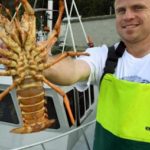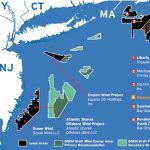Daily Archives: March 25, 2018

Twenty-One Bad Things About Wind Energy — and Three Reasons Why
Trying to pin down the arguments of wind promoters is a bit like trying to grab a greased balloon. Just when you think you’ve got a handle on it, it morphs into a different story and escapes your grasp. Let’s take a quick highlight review of how things have evolved with merchandising industrial wind energy.,, Wind energy was abandoned for most commercial and industrial applications, well over a hundred years ago. Even in the late 1800s it was totally inconsistent with our burgeoning, more modern needs for power.,,, The claim that wind energy is “green” or “environmentally friendly” is laugh-out-loud hilarious – except for the fact that the reality is not funny at all.>click to read< 18:51

76-year-old stays young building shrimp boat from scratch
Looking over the steel frame, William “Buddy” Davis explained his vision for his made-from-scratch boat. Pointing, he showed where the deck will be installed, the engine room, and a small window into the part where fish and shrimp will be kept in coolers. It’s a project the 76-year-old started last year, he said, and has worked on it on and off with his sons over time. It’s something fun for him to do between shrimping seasons. “That’s all we’ve ever done, fish and shrimp, work on boats,” Davis said of his family. “That’s all we know.” >click to read< video 16:52

Seals and sulking salmon are causing a data problem for Fish & Game
The Alaska Department of Fish and Game has a numbers problem. A statistical bias in the department’s data on the Taku River — conducted via a “mark-recapture” system for decades — means it has been overestimating how many Chinook and sockeye salmon make it up the river to spawn by about 30-40 percent. The statistical bias is now being corrected by new state-of-the-art studies, Fish and Game says, and much of the issue can be chalked up to seal predation. It also doesn’t mean either of the stocks are any worse off than they have been, ADFG says. But fishermen aren’t buying it. >click to read<13:52

New Season For Lake Erie Fleet
The largest fresh water commercial fishery is located in Wheatley on the shores of Lake Erie. Pickerel, or walleye, and perch are the main commercial species sought after by the Lake Erie fleet of fishing vessels. The fleet, however, is a collection of boats, known as fish tugs, working the lake for a number of different processors centered in Wheatley, like Cavendish, Loop, Presteve, and Taylor. The fleet of almost 45 boats returned to the lake about three weeks ago after the winter hiatus. Over 2 million pounds of perch will be harvested from Lake Erie this year and almost 6 million individual pickerel. >click for photos< 12:05

New Brunswick Crab fishermen to test ropeless fishing
New Brunswick snow crab fishermen will test two ropeless trap methods this spring to reduce the use of the fishing rope blamed in the deaths of two North Atlantic right whales last year.,,Mark Baumgartner, of Woods Hole Oceanographic Institution in Massachusetts, said ropeless fishing is the solution to the entanglement problem.,, Robert Haché, director general of the Acadian Crabbers Association, said the fishermen want to do all they can to prevent entanglements.,, The techniques to be tested this season will be from U.S.-based technology and research companies, Haché said. >click to read< 10:13

Stormy horizons – Salmon farms
Good news for Alaska commercial fishermen: Salmon last year ranked as the favorite fish at Japanese conveyor-belt sushi restaurants for the sixth year in a row, according to a survey by seafood processor Maruha Nichiro. Bad news for Alaska fishermen: “Ninety percent of that salmon is imported from Chile and Norway, but its popularity is now spurring domestic fish farming,” Nikkei Asian Review reported earlier this month. The report of Japanese domestic fishing farming might be the worst news of all. >click to read<09:02

Support local seafood before it’s too late
“Fishermen are the farmers of sea,” (March 17), states fisheries liaison Meghan Lapp in the documentary “Fishing Wars: Drowning in Regulation.” Oppressive federal regulations, inaccurate science and low quotas are crushing commercial fishing in Stonington and other communities. Fish stocks are at healthy levels, yet 90 percent of seafood consumed in the U.S. is imported. And 97 percent of those imports are not inspected by the FDA. Are you worried yet? I am. >click to read< 08:18













































